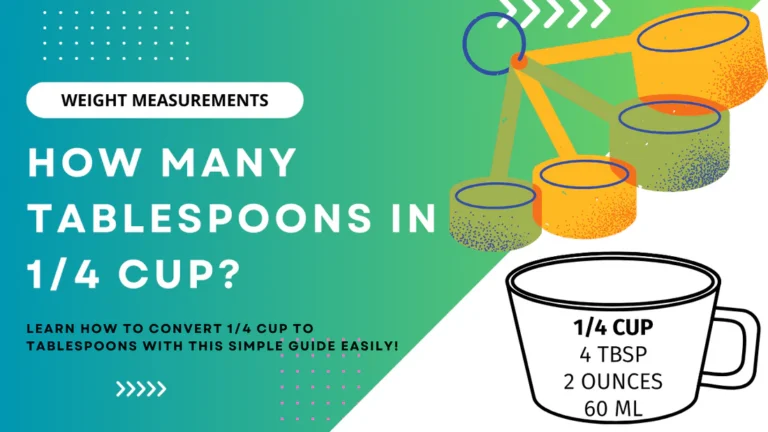Understanding measurements in cooking and baking is vital, mainly while working with recipes from numerous areas that may use one-of-a-kind systems. One of the maximum commonplace questions, specially for those new to the kitchen, is: “How Many Tablespoonsns in a Cup?” This article will provide an in depth breakdown of this conversion, its significance, and how to utilize it to your regular cooking and baking.
The Basic Conversion: Tablespoons to Cups
In america, wherein the commonplace machine is most customary, a fashionable cup is equal to sixteen tablespoons. This primary conversion is important for following recipes as it should be, especially in baking, in which precision is fundamental.
- 1 cup = 16 tablespoons
- 1/2 cup = 8 tablespoons
- 1/4 cup = 4 tablespoons
This straightforward ratio permits you to scale recipes up or down easily, whether or not you’re doubling a recipe or halving it.
Why This Conversion Matters
Baking Precision
Baking, in contrast to cooking, is a technology. The slightest deviation in measurements can modify the texture, flavor, and appearance of the very last product. Understanding the tablespoon-to-cup conversion is vital for maintaining the integrity of your baked goods.
For example, if a recipe calls for 1/four cup of sugar, knowing that this equals four tablespoons can assist if you’re the usage of a tablespoon to degree rather than a cup.
Cooking Versatility
In cooking, this conversion adds versatility. Not all households have an extensive array of measuring gear, and knowing the equivalent measurements lets in you to improvise. Whether you’re making sauces, soups, or dressings, being able to degree accurately with what you’ve got available is priceless.
How to Use the Conversion in Different Recipes
Converting for Smaller Quantities
When you are coping with smaller quantities, along with teaspoons, the conversion turns into even extra essential. There are 3 teaspoons in a tablespoon, and this expertise allows whilst you’re scaling down recipes or making changes.
For example:
- 1 tablespoon = 3 teaspoons
- 1/2 tablespoon = 1 1/2 teaspoons
These smaller conversions are particularly beneficial whilst you’re tweaking recipes or looking to reduce elements like salt, sugar, or spices.
Converting for Larger Quantities
Scaling recipes up is every other location wherein understanding ”How Many Tablespoonsns in a Cup” turns into essential. For larger recipes, this conversion can store time and effort whilst measuring out elements. Instead of counting out tablespoons again and again, you may speedy convert to cups and make the technique extra green.
For instance, if a recipe requires three cups of flour, that equals 48 tablespoons. Knowing this conversion can simplify the task, specially if you’re operating with restrained gear or need to make changes for a couple of batches.
Common Scenarios Where This Conversion Is Useful
Adapting International Recipes
Many worldwide recipes, specially those from nations using the metric device, use grams or milliliters as opposed to cups and tablespoons. When adapting these recipes, information the tablespoon-to-cup conversion can help bridge the gap between measurement structures.
For instance, if a European recipe calls for 250 milliliters of milk, that’s equal to approximately 1 cup (or 16 tablespoons) inside the U.S. Standard system.
Modifying Recipes for Dietary Preferences
When editing recipes to match nutritional wishes, which include decreasing sugar or fat content material, knowing How Many Tablespoonsns in a Cup allow you to make unique adjustments. For instance, in case you’re decreasing the sugar in a recipe by using half of, you can accurately measure out 8 tablespoons in place of a complete cup.
Tips for Accurate Measurement
Use the Right Tools
Using the perfect measuring equipment is crucial for accuracy. While tablespoons and cups are commonplace household gadgets, no longer all are created same. For excellent consequences, invest in excellent measuring spoons and cups specifically designed for cooking and baking. These gear ensure that your measurements are accurate and steady.
Level Off Ingredients
When measuring dry components, such as flour or sugar, it’s vital to level off the element with the flat fringe of a knife or a straight facet. This ensures that you’re not including more, which can throw off the recipe. This is particularly essential whilst the use of tablespoons, as even a small extra can make a difference.
Use Liquid and Dry Measuring Cups Appropriately
Liquid and dry measuring cups are designed in another way for a reason. Liquid measuring cups generally have a spout and are clean, making an allowance for smooth dimension of wet components like milk or oil. Dry measuring cups are supposed to be filled to the top and leveled off. Mixing up those cups can cause inaccurate measurements, so always use the best device for the activity.
Beyond the Basics: Different Cup Sizes
It’s important to be aware that not all cups are created same. While the U.S. Commonplace machine makes use of a widespread cup dimension, other international locations may have special requirements. For instance:
- UK cup: 1 UK cup is identical to ten UK tablespoons (which might be barely larger than U.S. Tablespoons).
- Metric cup: In nations the use of the metric device, 1 cup equals 250 milliliters, that’s barely extra than the 240 milliliters in a U.S. Cup.
Being aware about these differences is crucial when following recipes from different nations to ensure that your measurements are accurate.
Converting Cups and Tablespoons for Liquids vs. Solids
While the primary conversion of sixteen tablespoons to at least one cup holds genuine for maximum substances, it’s important to understand that the density of the aspect can have an effect on the way you measure it. For instance:
- Liquids: Generally, liquids like water, milk, and oil measure appropriately with the tablespoon-to-cup conversion due to the fact they have got a regular volume.
- Solids: Dry components, like flour or sugar, can vary depending on how they’re packed into the measuring cup. It’s first-class to fluff the factor before measuring and degree it off for accuracy.
For sticky or dense ingredients like peanut butter or honey, it’s crucial to degree cautiously to make sure that you’re not adding extra than the recipe requires.
Conclusion: Mastering the Tablespoon-to-Cup Conversion
Knowing How Many Tablespoonsns in a Cup is a essential talent that can make a while in the kitchen greater efficient and your recipes greater a hit. Whether you’re baking a cake, cooking a savory dish, or experimenting with a brand new recipe, this understanding helps you measure elements as it should be and alter recipes for your liking.
From information the primary conversion to applying it in diverse cooking scenarios, mastering this conversion empowers you to be greater assured and creative within the kitchen. So next time you’re confronted with a recipe that requires specific measurements, consider: 1 cup equals sixteen tablespoons, and you’re properly in your manner to culinary achievement.
For more insights and detailed articles, explore the menu on How Many Tablespoonsns in a Cup
Read more on ExposedMedia


